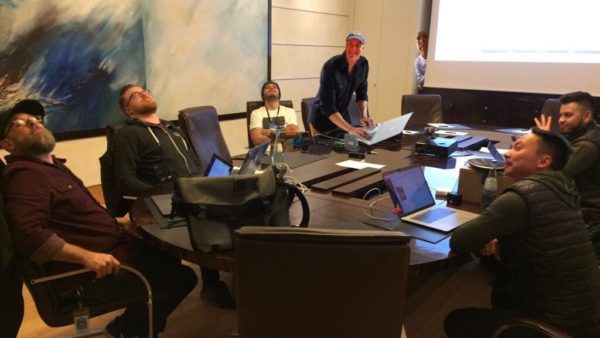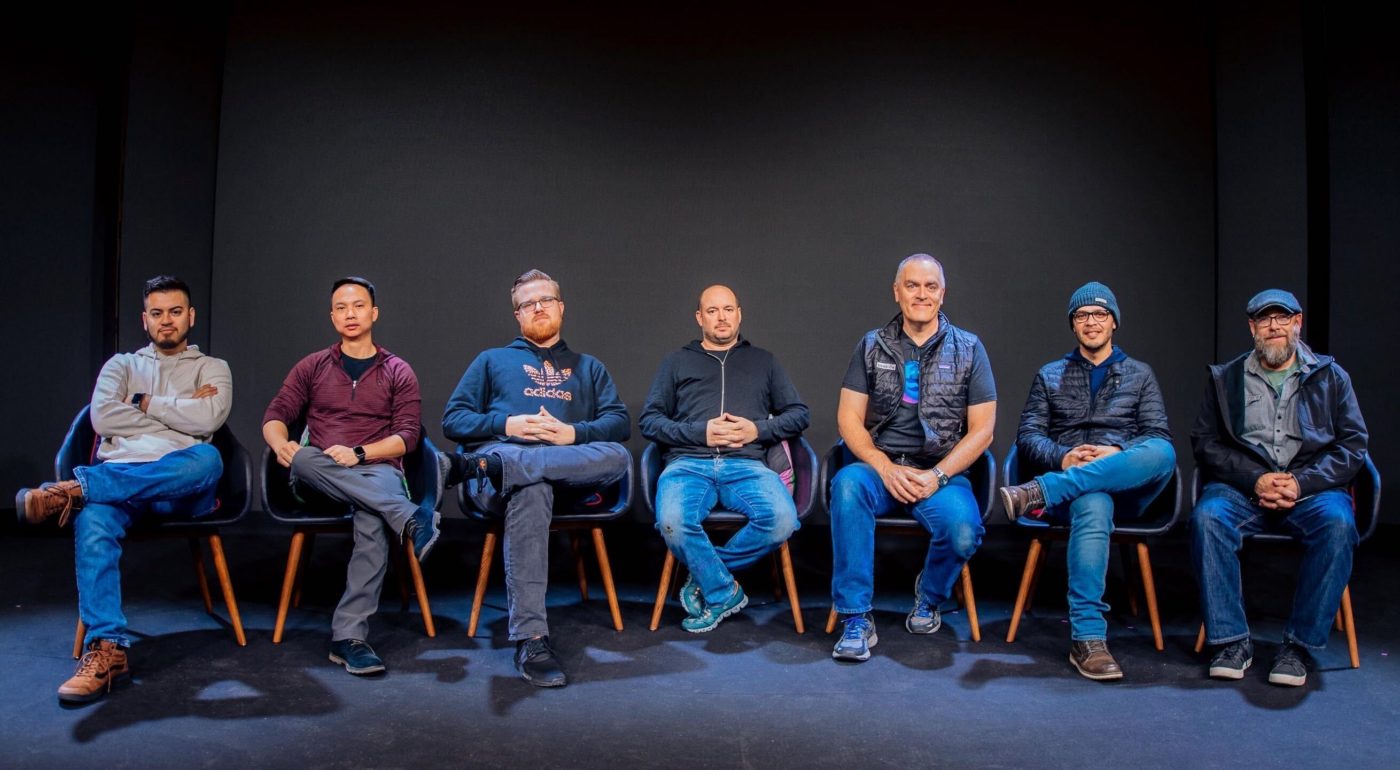In early 2020, Mozilla’s A/V Collaborations team was hard at work on a massive transition, moving every employee—and every conference room—off the company’s previous video-conferencing provider and onto Zoom. The team had helped Mozillans all over the world get connected and was 80% through its work on Mozilla’s physical office spaces, where they fine-tuned everything from lighting to camera positioning to microphones. They were just starting to think about the next step—providing additional support for the more than 400 employees who’d been working remotely.
Then COVID-19 hit, sending the entire company home and transforming that “next step” into an urgent need virtually overnight.
*****
Tony Recendez (Senior Manager, A/V Collaborations): With everyone suddenly remote, our focus shifted immediately. But it wasn’t as simple as just saying, “Here’s how you should set things up.” We wanted to respect the fact that everyone’s space is different and everyone uses equipment differently—and we wanted to respect people’s privacy, as well.
Khanh Nguyen (Senior A/V Operations Lead): You might need a mic for the top of a monitor, or one that sits on your desktop. You might want headphones that block as much noise as possible, or earbuds that won’t pinch your ears. So our approach was to offer examples and suggestions. We shared best practices and recommended hardware, but it was about helping people figure out what was going to work for them.
Tony: We also tried to get as much feedback as we could, including from the “Away Team” Slack channel. We wanted to learn as much as we could about what people were already doing.
Mark Richards (Senior A/V Systems Administrator): In those early days, we were fielding lots of questions about Zoom—not just how to use it, but whether we should. Millions of people around the world were starting to use the platform all that same time, not just us at Mozilla, and there were headlines about privacy and security concerns. We’d disabled problematic features of the platform before we ever rolled it out, but we still had to set people’s minds at ease.
We did make a few changes, too, like setting up user-specific authentication for some calls. We also enabled waiting rooms that require manual admission for people outside the company but allow Mozillans in by default. That was important because we do so much work with the greater community; we have a lot of calls that are theoretically open to anyone.
Andy Kochendorfer (Streaming Communications Lead): Once we got through the initial transition, we started to focus on Virtu-All Hands, our first fully online version of our twice-annual, company-wide meeting. That required a lot of adaptation as speakers and agendas changed, but I think we managed to give people a good experience, and we pulled it off rather quickly.
For some of the Virtu-All Hands events, we were able to incorporate Air Mozilla, our internal web streaming platform, with Hubs, Mozilla’s AR/VR platform. That was cool—people could appear as their avatar and walk around a virtual space where a live presentation was played.
The Mozilla Foundation events have been another success story. We’ve been able to get speakers together on Zoom for our Dialogues and Debates series and to provide a broadcast-quality experience for the audience, with rolled-in content and live captioning.
Mark: Our team has always worked closely with Mozilla’s executives and their teams to make sure their presentations are seen and heard as they intend. But that’s taken a different form with people working from home. We’re giving feedback on things like virtual backgrounds as well as the content itself.

The team together, in the together times
Tony: Instead of setting up microphones and podiums in a room with them, we’re doing everything virtually—and that takes a lot of collaboration. I can’t just drop a bunch of gear outside someone’s door; we have to work together to understand their space and design a setup that’s right for them.
With our leadership team, for example, we tested out different lighting and microphone options, then we came up with a package of backgrounds, then we tried out green screens. It’s about building a relationship so we can help make sure not only that their video and audio look and sound great, but that they feel completely comfortable.
Khanh: Being a step ahead is a key skill on an A/V team, even more so virtually than when you’re working in person. We have to anticipate what someone’s going to need well before they need it.
That includes the fun stuff—we want to help people be productive, but we also want to make work as joyful as possible. So we’ve been getting creative with Zoom, from sharing animated virtual backgrounds to coming up with games we can play remotely.
Tony: We’re helping people stay connected beyond work, too. Our team has been providing guidance for virtual Boy Scout meetings and Zumba classes, and we’ve helped people keep in touch with their families.
There’s still a lot to do. We want to design more specifically for the different ways people work from home—what tools are useful for someone in our Product organization, versus someone in Legal or Finance? And we’re thinking about what should change in our physical spaces when people are back in the office. What can we do to reduce the number of touchpoints to get a Zoom started in a conference room, for example? We have a head start there, because even before the pandemic we’d been working on reducing hardware footprints to make our spaces more flexible. Combined with automating certain tasks and using more voice commands, I’m hopeful we can make things much safer, too.
Andy: On the streaming communications side, I think we have an opportunity to do more events and outreach through social media and virtual channels, which will be great even when we’re able to gather in person again.
Khanh: From the streaming side to event production to the infrastructure, I’ve been so impressed by the way my teammates are continuing to go above and beyond to help our fellow Mozillians. It’s nice to work with passionate people who genuinely care.
Tony: Absolutely. This is the best group I’ve ever worked with. It’s definitely a shared value on the A/V team to put others ahead of ourselves and take care of the communities in the spaces we support.
Andy: And I think it was clear during Virtu-All Hands how much that meant to people. I’ve been working from home for years myself, but to suddenly be thrust into a different environment and lose all the face-to-face connections you’re used to—that can be tough. People have really appreciated opportunities to get as close as possible to in-person experiences.
Mark: Being able to nurture a sense of normalcy in this absurd, chaotic time—that’s rewarding for all of us. The mission of Mozilla is what brought us here and keeps us here, and we want to do whatever we can to help. That I get to be part of an awesome team and work with my friends is just icing on the cake
***
Interested in working with the Mozilla team? Learn more about working with us here.
